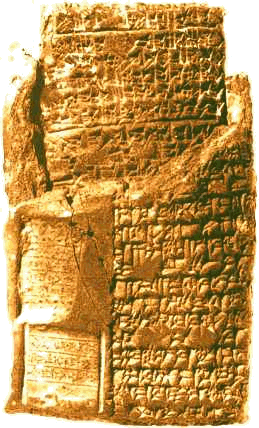

#Another name for babylonian numerals plus#
Thus, in the Babylonian system represented 3,600 plus 60 plus 1, or 3,661.

Unlike those of the Egyptians, Greeks and Romans, Babylonian numbers used a true place-value system, where digits written in the left column represented larger values, much as in the modern decimal system, although of course using base 60 not base 10. Sumerian and Babylonian mathematics was based on a sexegesimal, or base 60, numeric system, which could be counted physically using the twelve knuckles on one hand the five fingers on the other hand. Sumerian & Babylonian Number System: Base 60 A rudimentary model of the abacus was probably in use in Sumeria from as early as 2700 – 2300 BCE. Over the course of the third millennium, these objects were replaced by cuneiform equivalents so that numbers could be written with the same stylus that was being used for the words in the text. Starting as early as the 4th millennium BCE, they began using a small clay cone to represent one, a clay ball for ten, and a large cone for sixty. They moved from using separate tokens or symbols to represent sheaves of wheat, jars of oil, etc, to the more abstract use of a symbol for specific numbers of anything. They were perhaps the first people to assign symbols to groups of objects in an attempt to make the description of larger numbers easier. In addition, the Sumerians and Babylonians needed to describe quite large numbers as they attempted to chart the course of the night sky and develop their sophisticated lunar calendar. Indeed, we even have what appear to school exercises in arithmetic and geometric problems.Īs in Egypt, Sumerian mathematics initially developed largely as a response to bureaucratic needs when their civilization settled and developed agriculture (possibly as early as the 6th millennium BCE) for the measurement of plots of land, the taxation of individuals, etc. The Sumerians developed the earliest known writing system – a pictographic writing system known as cuneiform script, using wedge-shaped characters inscribed on baked clay tablets – and this has meant that we actually have more knowledge of ancient Sumerian and Babylonian mathematics than of early Egyptian mathematics. I’m not sure I can offer much trouble-shooting advice if you can’t get this to work on your computer.Sumer (a region of Mesopotamia, modern-day Iraq) was the birthplace of writing, the wheel, agriculture, the arch, the plow, irrigation and many other innovations, and is often referred to as the Cradle of Civilization. It took me quite a while to get all this to work. I tried for a while, but couldn’t get them to work.ĭisclaimer: I know my way around TeX pretty well, but I’m not a power user. I’d love to be able to do something similar with the Mayan numbers.
#Another name for babylonian numerals download#
If you would like to give this a try, download my. To create a number board with the Chinese counting rods representing 123 I type To express 123 in cuneiform all I have to write is Because the syntax was often messy, I spent a while burying the complicated TeX in the headers so that the numbers would be easy to work with in the document.įor example, to generate the Egyptian hieroglyphics for 123 I write In the end I was able to typeset Egyptian hieroglyphics, Babylonian cuneiform, and Chinese rod numerals. It was a fun (although time consuming) exercise. It quickly became apparent that, because fonts are involved, I would have to use XeTeX rather than LaTeX. As I was writing up the first homework assignment it occured to me that I should investigate whether these numbers could be typeset using LaTeX.

We are beginning with a brief discussion of ancient number systems: Egyptian, Babylonian, Mayan, Chinese, Incan, Greek, Roman, and Hindu-Arabic. I am teaching a history of mathematics class this semester.


 0 kommentar(er)
0 kommentar(er)
